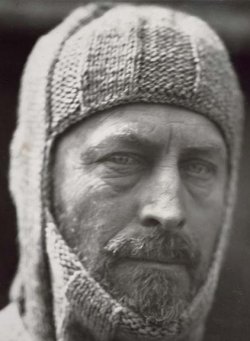Bradfordian ~ Sir DOUGLAS MAWSON(1882-1958) explorer and geologist
A story of survival that rivals that of Sir Ernest Shackleton.
Sir DOUGLAS Mawson born in Bradford, West Yorkshire, England, and educated at the University of Sydney. He was a member of the scientific team of the 1907 expedition of the British explorer Sir Ernest Shackleton. Mawson’s scientific training ensured his place on two other significant sledging journeys: the climbing of the 12,488 ft volcano Mount Erebus, and the 1,280 mile attempt to locate the South Magnetic Pole on which he glimpsed the vast unknown expanse beyond Victoria Land.
Mawson then organized and commanded an Australasian expedition (1911-1914) to explore Antarctica. A series of bases partially linked by the pioneering use of wireless was established, and sledging parties sent out. With the assistance of sledging dogs, Mawson led a three-man party towards Victoria Land. The tragic loss of both his companions resulted in Mawson cutting down the remaining sledge and returning to his main base. The last 100 mile took a month for him to accomplish in his weakened state, during which time the remaining dogs were eaten. His second year in the Antarctic was dominated by the news of the loss of the party of Captain Scott, a tragedy that largely overshadowed Mawson’s own remarkable survival.
In 1914 Mawson was knighted. He became professor of geology and mineralogy at the University of Adelaide, South Australia in 1921. Mawson was the leader of the British, Australian, and New Zealand Antarctic Expedition from 1929 to 1931. It was this venture that led to the establishment of the Australian Antarctic Territory. After 1946 he was a member of the Commonwealth Government's Antarctic Advisory Committee.
Following his death Mawson was accorded a state funeral and was buried in the seaside suburb of Brighton in Adelaide. He wrote a popular account of his 1911-1914 expedition, The Home of the Blizzard (1915), and his scientific publications numbered more than 100 papers on a diverse range of subjects
Reference:
